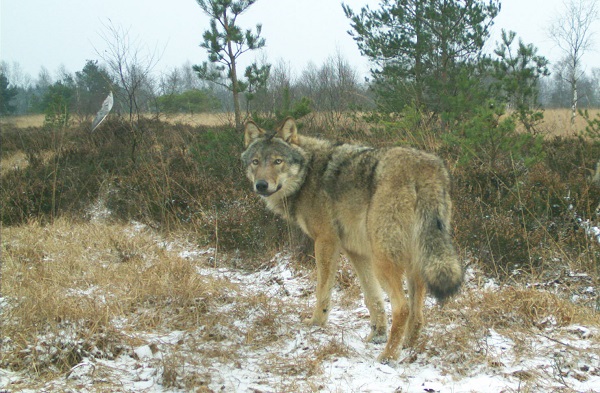 a Wolf from the Central European lowland population;
Credit: LJN
a Wolf from the Central European lowland population;
Credit: LJN
Around two weeks ago, sheep in a field in the Niederanven area had clearly been attacked by a predator; that the predator could be a wolf could not be excluded on the basis of the report by experts from the nature administration.
To check by means of genetic analyses, samples were taken from the animal's wounds in the hope that they would catch enough saliva with usable DNA from the predator causing the bite. The samples were taken and then examined at the Senckenberg Institute in Gelnhausen (Germany), which is the reference laboratory in this area. The results of the laboratory analyses have now been communicated to the nature administration by the Senckenberg Institute. The following is now official:
1. The species analysis based on two samples showed that the animal that attached three sheep in the Niederanven area was clearly a wolf. The farmer who owned the sheep is consequently 100% compensated.
2. The population analysis has shown that it is a wolf from the Central European lowland population, the distribution of which extends from the Vistula in the centre of Poland to Lower Saxony (D). Animals from this population have also been identified in Belgium, the Netherlands and Rhineland-Palatinate.
Luxembourg now has the third verified evidence of a wolf for over 100 years. As is well known, the first evidence was in 2017 in the Holzem-Garnich area; however, this wolf came from the Alpine population, which has its main distribution in the Italian and French Alps. In 2018 there was also a confirmed notice near Fouhren; the origin of this wolf is unknown.
Overall, the events of the past few years indicate that Luxembourg is located in the middle of a large region in which the Central European lowland population and the Alpine population merge. Wolves from both populations have also been detected in Belgium.
It is not known whether the wolf found in the Niederanven area is still in the area or has since wandered on. In any case, members of the public are still encouraged to immediately report all possible indications of the presence of wolves to the nature administration for monitoring (e-mail: wolf@anf.etat.lu).
"Wolf Action plan 2017" elaborated and presented to the public
The wolf is strictly protected across Europe. Luxembourg has been preparing for the possible return of the wolf in recent years, in order to define how to deal with this species from the outset. This is done in the "Action and management plan for dealing with wolves in Luxembourg", which was developed together with all actors from agriculture, science, nature conservation, private forest owners and hunting and was presented to the public in 2017.
In principle, wolves are shy - brochures provide information about rules of conduct
Wolves generally avoid direct contact with humans. Encounters between humans and wolves are therefore extremely rare, but not impossible. As a rule, wolves withdraw as soon as they notice a human being, but they can also be curious and take a closer look at the human being before they withdraw. In the brochure "Wolves in Luxembourg?" readers can find a lot of other information about the wolf as well as rules of conduct that should be followed when encountering a wolf.
The "Wolf action plan" and the brochure on rules of conduct are available free of charge from the nature administration on tel: 247-56600 as well as from the administration visitor centres: Mirador in Steinfort, A Wiewesch in Manternach, Ellergronn in Esch-Alzette, Biodiversum in Remerschen and Burfelt near Insenborn. The documents can also be found online at www.emwelt.lu








